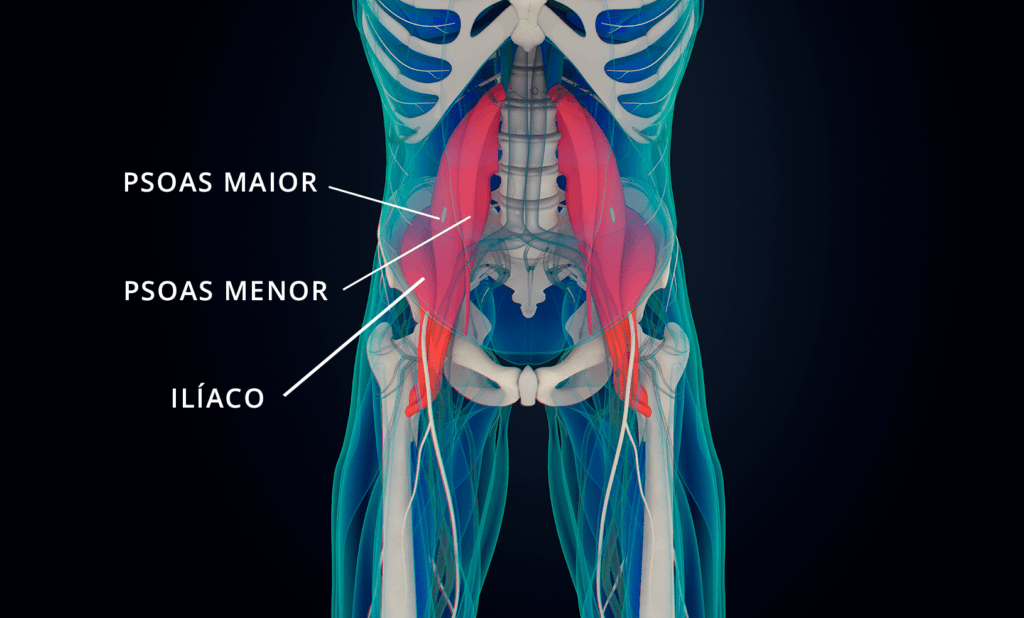
Iliac Psoas Injury: How to Treat and Recover
Share
Injury to the iliac psoas muscle is a relatively common condition, especially in active individuals, athletes, and those who exercise regularly. This muscle plays a key role in hip flexion , making it essential for movements such as running, jumping, knee lifts, and even sitting with correct posture.

In this article, we explain how to identify, treat, and recover from an iliacus psoas injury — step by step.
📍 What is the iliac psoas muscle?
The iliac psoas is composed of two muscles:
- Psoas major : connects the lumbar spine to the hip.
- Iliac : connects the pelvis to the femur.
Together, they form a powerful muscle group responsible for:
- Hip flexion;
- Stabilization of the lumbar spine;
- Erect posture and trunk movements.
❗ Symptoms of iliac psoas injury
- Deep pain in the groin area or in the front of the hip;
- Difficulty lifting your leg or walking quickly;
- Discomfort when sitting or standing up;
- Feeling of tension or stiffness in the lower back;
- Sometimes referred pain in the lower abdomen.
⚠️ Common causes
- Overload in training (excessive hip flexion, running uphill);
- Prolonged sitting posture with shortening of the psoas;
- Poorly controlled explosive movements (e.g. sprints, jumps);
- Muscle imbalances or lack of mobility.
🩺 Diagnosis
The diagnosis should be made by a healthcare professional, such as a physical therapist or sports medicine physician. Clinical tests (e.g., the Thomas or psoas tests ) and, in some cases, imaging tests (ultrasound or MRI) may be used.
🛠️ Treatment and recovery
1. Initial phase: Reduce pain and inflammation
- Relative rest (avoid activities that aggravate pain);
- Application of ice to the affected area (15-20 min, 2-3 times/day);
- Myofascial massage techniques (with therapist or foam roller);
- Anti-inflammatories (only if prescribed).
2. Intermediate phase: Mobility and stretching
- Gentle psoas stretches (e.g., runner's pose);
- Hip and lower back mobility exercises;
- Avoid sitting for long periods — maintain active mobility.
3. Final phase: Reinforcement and return to activity
- Core strengthening (plank, glute bridge);
- Hip reinforcement with elastic bands;
- Progressive return to training, avoiding initial impact.
🤸♂️ Examples of useful exercises
-
Kneeling psoas stretch
- Keep one leg in front and the other behind, with your knee on the floor.
- Tilt your pelvis forward without arching your lower back.
-
Plank with elbow support
- Keep your core tight and your body aligned.
-
Leg raises in supine position
- Controls movement and prevents arching of the lower back.
⏳ Recovery time
Recovery time varies depending on severity:
- Minor injuries: 1 to 2 weeks
- Moderate injuries: 3 to 6 weeks
- Severe or chronic injuries: May require prolonged physical therapy or medical intervention
✅ Prevention
- Warm up well before training;
- Regular stretching of the psoas and hip flexors;
- Works core and glute strength ;
- Avoid sitting for long periods without breaks.
📚 Related articles
- Stretching exercises: Fascia lata
- Gluteus Medius Tendonitis vs Trochanterinitis
- Core Training: 5 Essential Exercises
🏁 Conclusion
An iliac psoas injury shouldn't be ignored. With the right diagnosis and well-guided recovery, you can return to training safely and avoid recurrences. Listen to your body and, whenever necessary, seek professional help.


